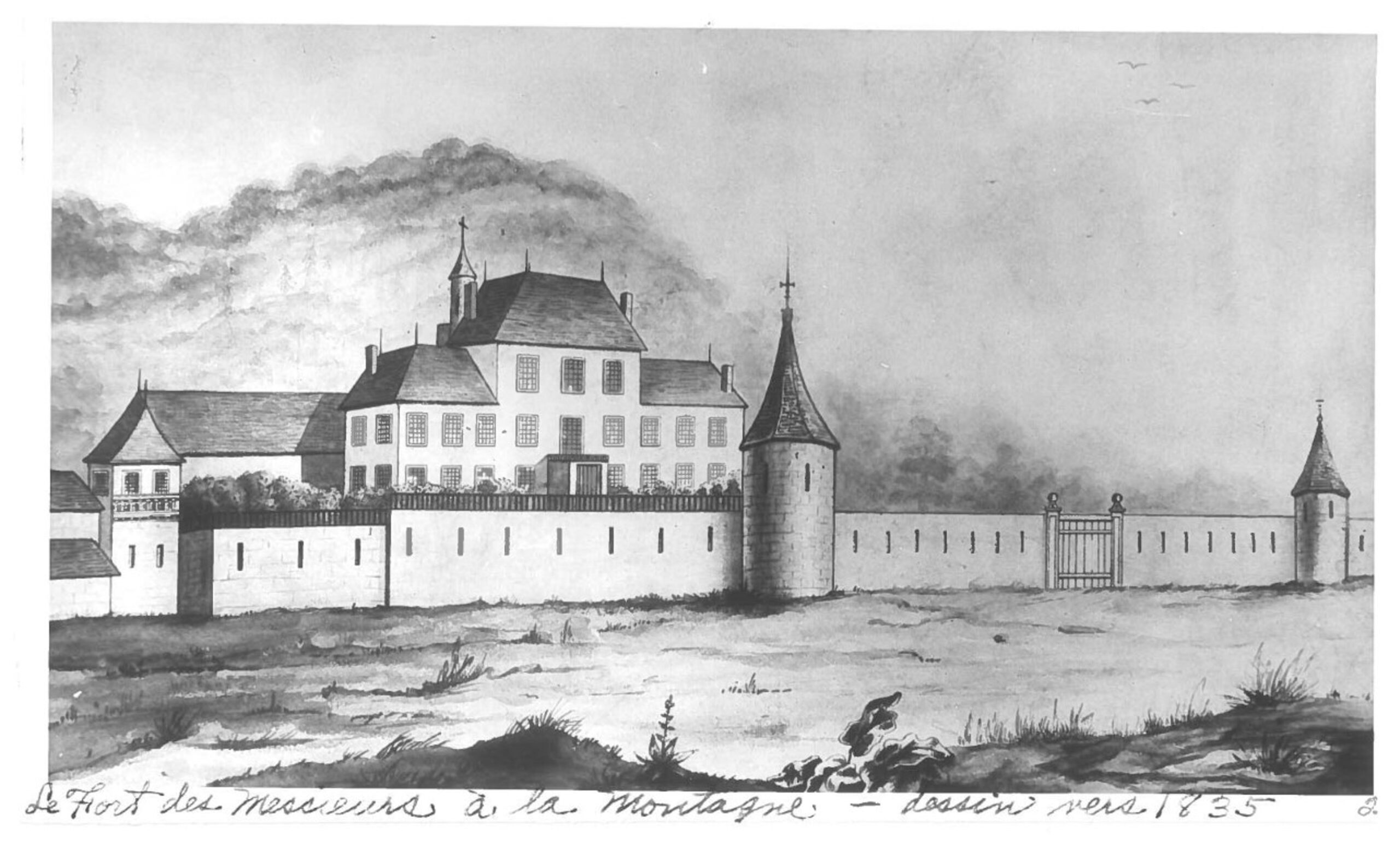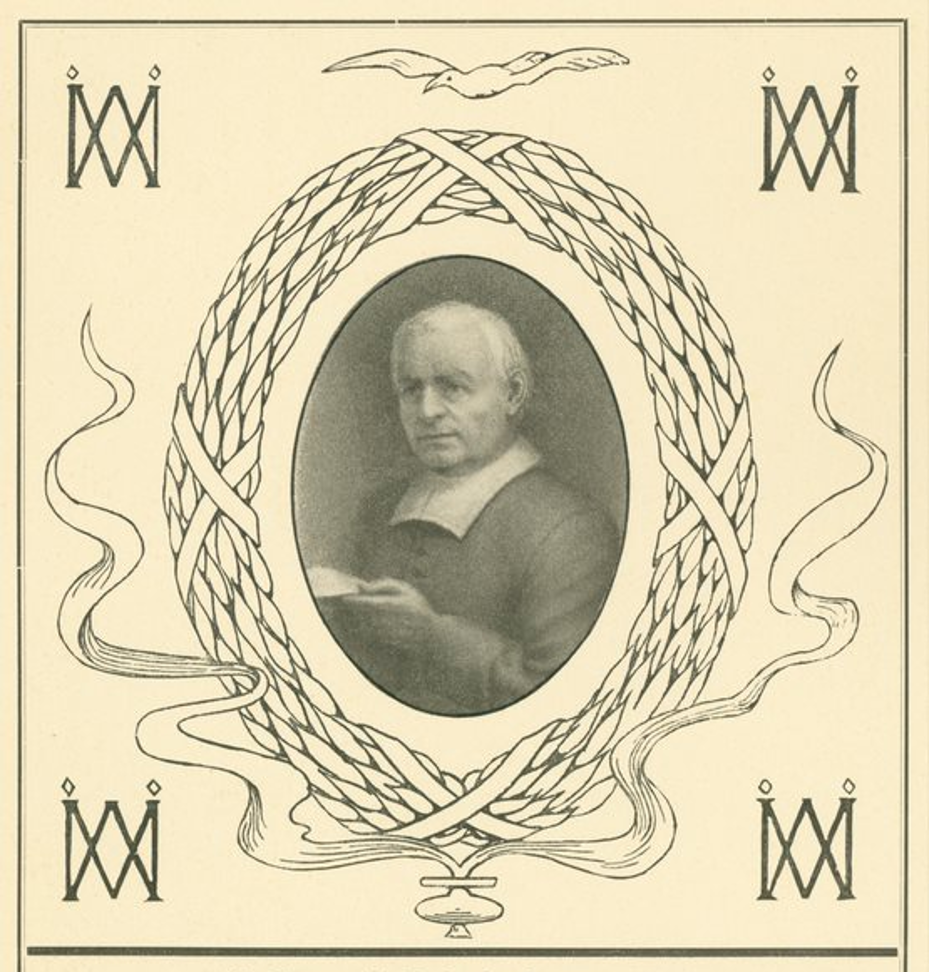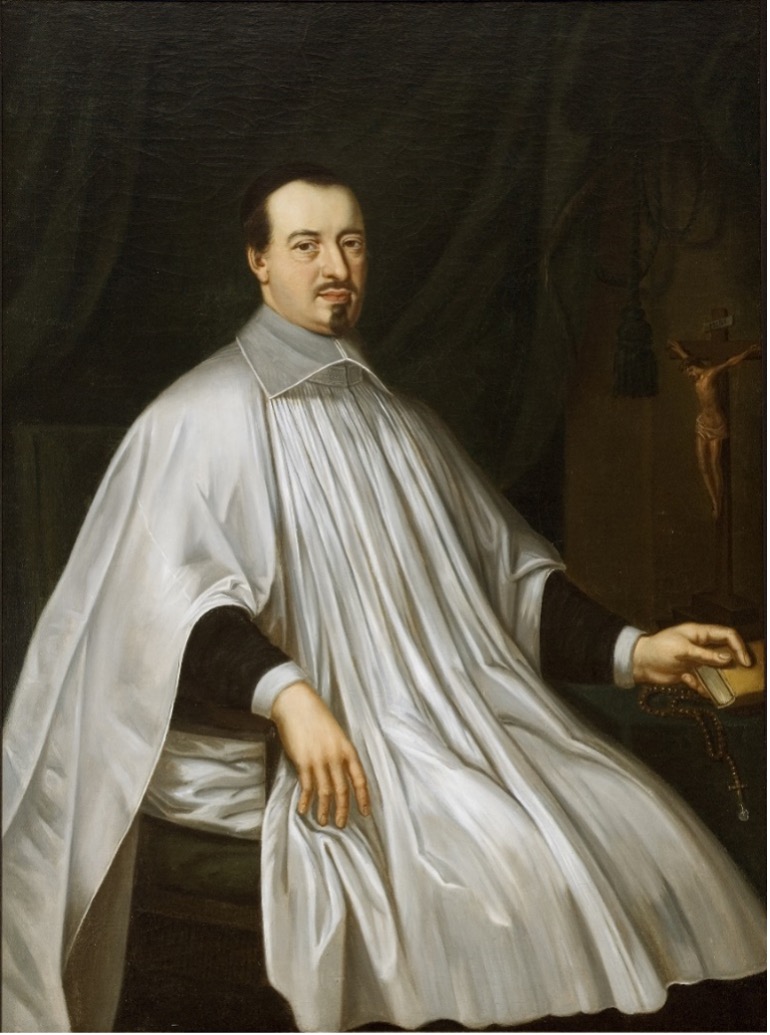
Who we are
L’Univers culturel de Saint-Sulpice (UCSS) is a non-profit organization established in 2006, whose mission is to ensure the preservation, accessibility and outreach of the archives, movable heritage assets and old and rare books of the Priests of Saint-Sulpice of Montréal (PSSM).
Classified since August 25, 2021 as heritage property under the Québec Cultural Heritage Act, these collections “present a heritage interest for their historical value,” according to the classification notice issued by the Ministère de la Culture et des Communications du Québec.
The arrival of the Sulpicians in Montréal
Mr. Jean-Jacques Olier (1608-1657) was the founding father of the Society of the Priests of Saint Sulpice, formally established in Paris in 1645. Driven by a missionary spirit, he joined the Société Notre-Dame de Montréal, which had a project to establish the Christian faith in New France. In the year of his death, 1657, Olier sent the first four Sulpicians to Montréal, priests Gabriel Thubières de Levy de Queylus, Gabriel Souart, Dominique Galinier and deacon Antoine d’Allet.
“Arriving in August 1657, the Sulpicians found the city on the verge of bankruptcy. Immediately, they made plans to stabilize and restore the city. They organized the streets, gave them names that endure to this day (e.g., Notre Dame Street, St. Matthew Street, St. Paul Street, etc.) and basically saved the city that is today a thriving polycultural Canadian metropolis.” (Source: Montréal and Saint-Sulpice)
The contribution of the Sulpicians to Montréal over 350 years
The Messieurs de Saint-Sulpice left their mark on the history and urban planning of the city and its surroundings. Known as the “Lords of the Island” under the seigniorial regime instituted by the King of France for the lands of Nouvelle-France, they participated, from 1663 to 1840, in the development of the young city’s infrastructure thanks to the revenues derived from their seigniory. In addition to designing Montréal’s first streets, they proposed the construction of the first canal in Lachine and built the first Notre-Dame Church (1683), the Saint-Sulpice Seminary (1684), the present-day Notre-Dame Basilica (1829), and the Saint-Sulpice Library (1915), one of the first public libraries in Montréal.
On the religious level, the Messieurs de Saint-Sulpice are pastors of the Montrealers and military chaplains. The superiors of the Sulpicians are also the vicars general of the bishop of Québec, from 1678 until 1836.
The Sulpician work opens an important way in the field of education of youth and in the formation of priests through the foundation of several educational institutions such as the Collège de Montréal in 1767, the Grand Séminaire de Montréal in 1840, the Séminaire de Philosophie in 1876 and the Collège André-Grasset in 1927. The Sulpicians joined with women’s congregations for the education of women and the assistance of people in need, notably the Religious Hospitallers of St. Joseph of Hôtel-Dieu, the Sisters of the Congregation of Notre-Dame and the Sisters of Charity of Montréal (Grey Nuns). They also established the community of the Little Daughters of Saint Joseph.

Fort des Messieurs à la Montagne – drawing circa 1835, photograph, PSSM.
Finally, the Sulpicians carry out missionary activities among the native peoples. They first established the Mountain Mission, first at the foot of Mount Royal, then at Sault-au-Récollet and Kanesatake-Oka, and then moved to other places in Canada in the 17th and 18th centuries. Later, during the 20th century, the evangelization efforts of the Sulpicians of Montréal spread to Asia and Latin America.

Mr. François Dollier de Casson, PSS, printed, PSSM.
Among the many Sulpicians who have left their mark on history by assuming multiple responsibilities, let us mention in particular Mr. François Dollier de Casson (1636-1701) and Bishop Olivier Maurault (1886-1968). The first, born in Lower Brittany, was first a cavalry captain before joining the Sulpicians. Sent to Nouvelle-France, he was a military chaplain, missionary, superior – and, as such, lord of the island of Montréal –, architect and historian. Among other things, he was responsible for the layout of the city’s first streets and the plans for the first parish church.
![M. Olivier Maurault, PSS, [21 novembre 1934], photographie, PSSM, P5:C.3.8-1/12.](https://universculturelsaintsulpice.ca/wp-content/uploads/2023/04/oliviermaurault.png)
M. Olivier Maurault, PSS, [21 novembre 1934], photographie, PSSM, P5:C.3.8-1/12.
Olivier Maurault began his theological studies in Montréal and completed his solitude (novitiate) with the Sulpicians in Paris, before becoming a professor at the Collège de Montréal, pastor of Notre-Dame parish, director of the Saint-Sulpice library, founder of the Collège André-Grasset, historian and president of the Société historique de Montréal. In 1934, he was appointed rector of the Université de Montréal.
Since 1657, the Society of the Priests of Saint Sulpice has contributed significantly to the religious, political, economic, social, and cultural development of the already diverse communities of the city of Montréal, of Québec and of Canada. With the same dynamism and spirit of service, it continues today its educational, cultural, and pastoral mission.
The vision of the priests
of Saint Sulpice of Montréal
The archives of the Priests of Saint Sulpice of Montréal (PSSM) constitute a rich heritage for the population of Montréal, Québec, Canada and North America. They feature arrivals from overseas and Aboriginal peoples. They bear witness to the establishment of the Christian faith in America. They also present the essential first milestones of Montréal’s social organization, where a population already marked by diversity lives.

During the 20th century, the mission of the Sulpicians spread to Asia and Latin America. Attached directly to the Montréal base of the Sulpicians, this deployment has since made it possible to gather a documentary baggage that is also part, today, of the Sulpician archives in Montréal.
For these reasons, the PSSM want to open their doors to historians and researchers who wish to further research on the origins of our society and to contribute to the dissemination of the rich historical potential of these archives that they hold and intend to preserve.
Concretely, they entrust to a distinct corporation, L’Univers culturel de Saint-Sulpice, the mandate of inventorying, preserving, making accessible, and promoting their important current archival heritage, as well as the objects, documents, and old books that could be bequeathed to them by Sulpician confreres at their death, as well as the archives related to the Sulpicians that could come from other sources.
The vision of the PSSM in the medium term is to have an always up-to-date inventory of their documents, movable heritage assets, books, and other rare and ancient objects that they keep in appropriate and secure locations. Thanks to the progressive digitization of the documents and the use of adapted research tools, researchers can, by appointment, easily consult and examine these heritage assets in order to document historical research leading to eventual publications, or in order to carry out projects for the enhancement of these assets.
Board of Directors
President
Prof. John Zucchi
Vice President
Sr. Nicole Fournier, SGM
Treasurer
Mr. Pierre-Alexandre Filion
Secretary
Mrs Fannie Dionne, PhD
Administrator
Mr. Robert Gauthier, PSS
Administrator
Mgr. Lionel Gendron, PSS
The team
Ms. Anne-Élisabeth Vallée, Ph. D., Art Historian and Archivist
aevallee@ucss.ca
Ms. Madeleine LeBlanc, Archival Technician
mleblanc@ucss.ca
Ms. Naomi Mercier, Archival Technician
nmercier@ucss.ca




